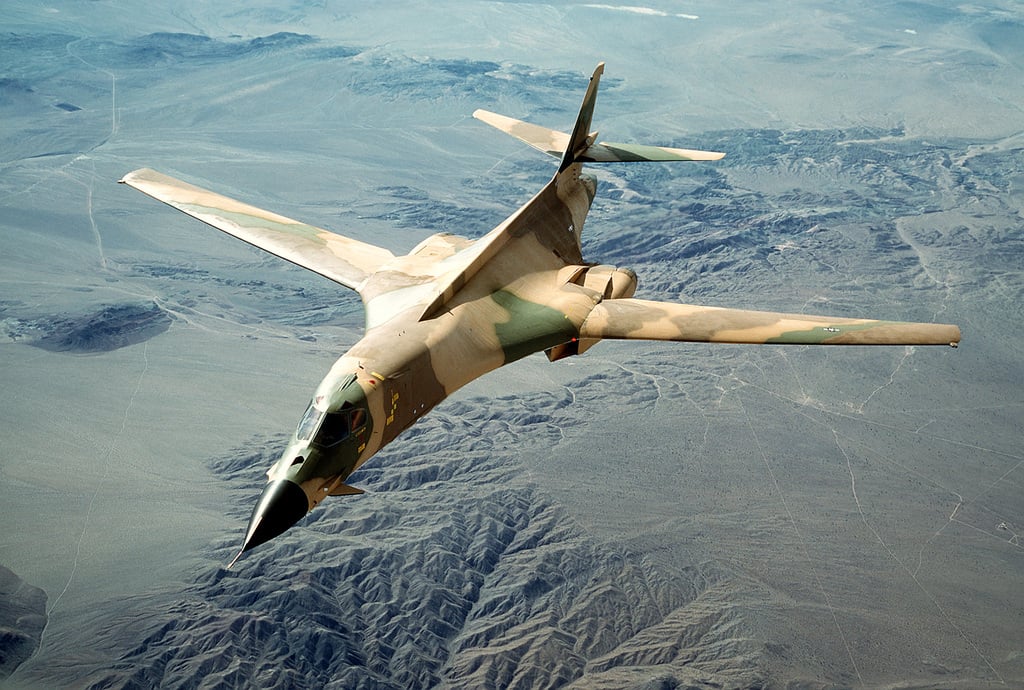The B-1 Bomber, often hailed as the powerhouse of American skies, seamlessly blends top-notch tech with brilliant aviation design. But the most eye-catching part is the swing-wing. It’s not just some fancy addition; this variable-sweep wing is an engineering gem that ramps up the aircraft’s adaptability. But how exactly does this engineering feat function? And, more importantly, why was such a feature deemed necessary in the first place?
The Intricacies of the Swing-Wing Mechanism
At a glance, the B-1’s wings can seem deceivingly simple. However, a complex symphony of mechanical and aeronautical design is beneath the surface. The variable-sweep wing mechanism allows the wings to pivot, or “sweep,” from a forward position to a rearward one. This functionality is not just for aesthetics; it provides the aircraft with a broad range of aerodynamic profiles suitable for different flight regimes.
The forward-swept position, with the wings extended straight out, maximizes lift. This is particularly useful during takeoffs, landings, and when flying at low speeds, as it offers increased stability. On the contrary, as the wings sweep back, the B-1 adopts a slender, streamlined form. This configuration reduces drag, enabling the bomber to cruise efficiently at high speeds and altitudes.
The Evolutionary Rationale Behind the Design
Why would engineers opt for such a seemingly complex solution when designing an aircraft? It’s all about its primary job: flying long distances and delivering potent nuclear or regular weapons. Imagine the B-1 as the multi-tool of the bomber world, like a Swiss Army knife in the skies. It has to sneak past high-tech enemy defenses close to the ground and zip way up high when things heat up.
Early in its design phase, the challenges became evident. An aircraft optimized for low-altitude penetration would differ significantly from one designed for high-altitude cruising. The swing-wing concept was thus the middle ground – a masterstroke allowing the B-1 to adapt on the fly to shifting operational requirements.
Beyond the B-1: The Legacy of the Swing-Wing Design
While the B-1 is a hallmark example, it’s not the only aircraft to employ this design. The variable-sweep wing concept was explored and integrated into various aircraft during the Cold War, notably the F-111 and the Soviet Tu-160. Yet, despite its evident advantages, the design fell out of favor in newer aircraft, often due to the weight, complexity, and maintenance challenges associated with the mechanism.
However, the B-1 is a testament to a bygone era where engineering audacity merged with military necessity. Its swing-wing design is more than just a technological wonder; it’s a tangible representation of the relentless quest for aerial superiority.
In the ever-evolving theater of aerial warfare, the B-1 Bomber, with its swing-wing mechanism, reminds us of an innovative spirit that pushed the boundaries of aeronautical design. Though variable-sweep wings might not grace most contemporary aircraft, they remain an iconic symbol of adaptability and the willingness to challenge conventional thinking.
You can find a unique piece of artwork by Craig Tinder titled “The Bone” that illustrates the initial test program of the supersonic B-1 (B-One) bomber. The limited edition canvas print even includes a piece of original fragment from the second prototype B-1A Lancer, making it a unique piece of history!
The Bone – B-1A Lancer Aviation Art by Artist Craig Tinder






Share:
The Bf 109 in Different Theaters: A Comprehensive Study from the Battle of Britain to the Eastern Front and the Mediterranean
Military Aviation Post-9/11: Transformation, Adaptation, and Modernization